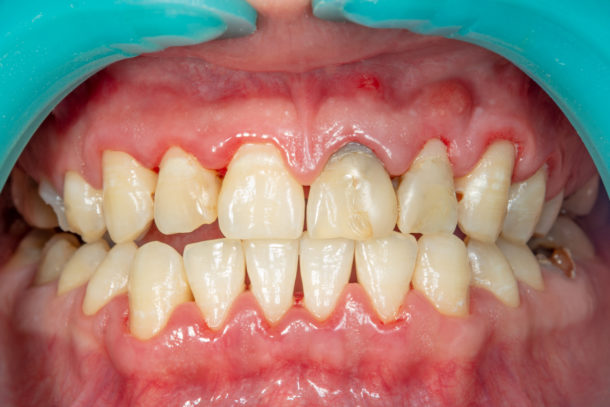Periodontal Disease: From Prevention to Treatment
As we wrapped up National Dental Hygiene Month in October, Reflection Dentistry wants to provide information about the different stages of gum disease.

The Importance of Regular Periodontal Assessments
Your hygienist likely discusses with you the measurements of your gums at least every 12 months. These measurements help determine the health stage of your gums and periodontal disease.
The periodontal disease assessment includes but is not limited to:
- Pocket depths
- Recession
- Bleeding
- Mobility
- Root furcation involvement
This tool, along with x-rays, helps us decide the best treatment for you.
Stages of Gum Health
Healthy Gums
- Gum tissue appears pink and firm
- No bleeding present
- 2-3mm gum pockets
- Teeth firmly supported by surrounding bone and gums
Gingivitis
- Pockets slightly deeper, usually 4mm
- Bacteria accumulation causes gingivitis
- Gums become visibly swollen and often bleed easily during brushing and flossing
- Inflammation remains reversible at this stage, limited to gum tissue
- Without proper care, gingivitis can progress to gum disease
Stages of Periodontitis
Once gingivitis progresses to periodontitis, we categorize the severity as follows:
Early Periodontitis
Early Periodontitis is characterized by progressing inflammation in the gums. During this stage, gums start pulling away from teeth, forming pockets. These pockets trap plaque, bacteria, and food, leading to infection. As a result, bacterial toxins and the body’s immune response begin the process of bone loss.
Moderate Periodontitis
In Moderate Periodontitis, the infection worsens, causing more pronounced inflammation and severe bleeding. Patients may begin to experience discomfort as further damage occurs to the bone and gums continue to recede.
Advanced Periodontitis
Advanced Periodontitis is the most severe stage. Pockets deepen and periodontal abscesses form. Patients often experience pain and a foul taste in their mouth. Significant bone loss leads to tooth mobility and a poor prognosis for tooth retention.
Prevention and Treatment
Gum disease is the most common cause of tooth loss among adults, but you can prevent it with good oral hygiene. If you’ve already received a gum disease diagnosis, don’t despair!
Early detection and proper therapy can treat gum disease and significantly slow its progression. Our highly trained hygienists take pride in caring for patients. Regardless of your gum health state, we partner with you toward a healthier mouth!

